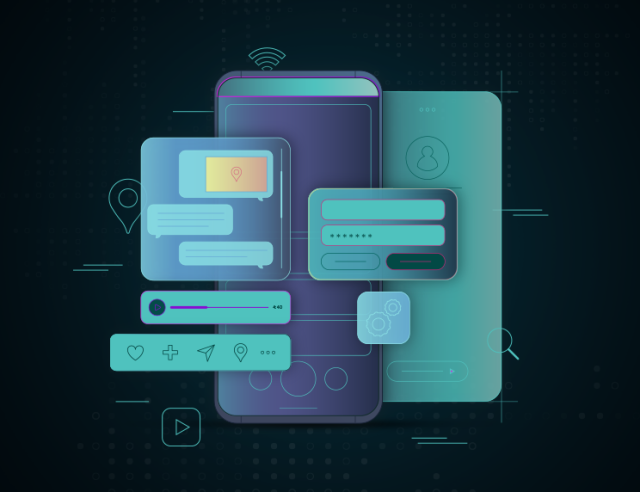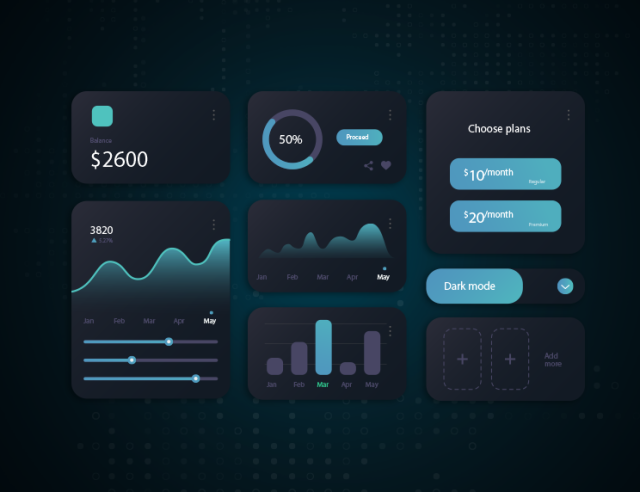UI/UX Design for Humans #1
Welcome back dear reader!
We’re back with a new topic to tackle. This one is less technical, and I’d go as far as to say it’s a bit fun. So, grab your iPad and think up your best designer ideas and let’s do this.
What *is* UI/UX design?
The focus on user satisfaction is as important as ever and for this reason, UI/UX design is extremely sought after these days.
There’s a common belief that UI and UX are just one discipline, but that is not entirely true. They are separate disciplines that focus on different aspects of the user’s journey with a digital product.
But since they overlap in many ways and are closely connected, they have merged into pretty much one profession.
UX is deciding which screens navigate to which screens and what elements are contained within them, while UI is taking that information and applying it through colours, fonts, icons, etc. that means that wireframing is the UX designer’s job and prototyping is the UI designer’s job.
UX design

“UX” stands for User Experience, and the design of it is the process of planning this experience for the user when they interact with the product.
Coined by Don Norman, a cognitive scientist at Apple, the term “User experience” has been around since the ‘90s. Our guy focused heavily on user-centred design, which placed the user at the front of the product design process.
The goal of UX design is to make using products and services, both digital or physical, less of a pain and more of a generally enjoyable experience. Not only are physical and digital products part of UX, but it covers all aspects of the end-users’ interaction with the company itself, its services, and its products.
The main job of a UX designer is to figure out who the user is and create something that will work well for them, they focus on all aspects of a product’s development, including its design, usability, and function.
UI design

“UI” stands for User Interface, and it’s the user-centred approach to designing the aesthetics of a digital product. An interface is the graphical layout of an application. Interfaces shouldn’t just be functional; they should also look attractive and visually appealing.
This is where the UI designer comes in, they focus on visual touchpoints that let users interact with a product, they basically design all the screens that make up a digital user interface, as well as the individual elements featured on those screens. Their goal is to create user interfaces that look great and accurately convey the brand.
What is the UI/UX design process like?
As we’re used to at this point, every process has a few stages, and this is no exception.
-
Research & Analysis
UI/UX designers gotta have a basic understanding of the challenges, needs, goals and expectations of users. They also need to fully understand the business they’re designing for and be familiar with their industry and current market.
During this stage, business requirements and product documentation are collected, as well as insights about the brand’s target audience. All this information is then analysed for the purpose of mapping, forming user personas, scenarios and stories, and ultimately having a strategy to create a design that will fulfil the company’s vision and user preferences.
-
Design
During the design phase, all the maps and ideas are considered, and sketched. The main deliverable in this phase is the wireframe.
The wireframe is the skeleton of the product, which will later be transformed into a mock-up, showing what the design should look like. The final step in the design phase is the prototype, which represents the final product with all the neat details integrated. Naturally, prototyping is not a one-and-done task; each prototype is carefully constructed, reviewed, and edited.
-
Validation
This phase is where the quality of the product is tested. It involves things like A/B testing, user testing to check if the usability is top-notch, and website analytics (like bounce rate, exit rate, average time spent on page, etc.) to get better insight into user behaviour. Based on all this data, UI/UX designers can make tweaks and enhancements if necessary.
What is the importance?
A decent digital product should be well designed and developed.
The primary goal of any business or company is to increase its sales and increase their growth. UI/UX Design plays an essential role in achieving that. The UI/UX Design of the application improves the user experience and customer satisfaction which ultimately helps increase the number of users of that specific application.
With users having lots of choices and alternatives for the products and/or services you are offering them, the span of time you get to grab the attention of your users is getting less and less, so having a neat design for your product helps win the customer’s confidence and will force them to make use of your product since it provides what they are looking for.
The number of consumers you are getting on your website/application can measure the success of the great UI and UX.
Now that we have established the very basics of UI/UX design, stay tuned in the next one for we are about to dissect the very fundamentals of design.

